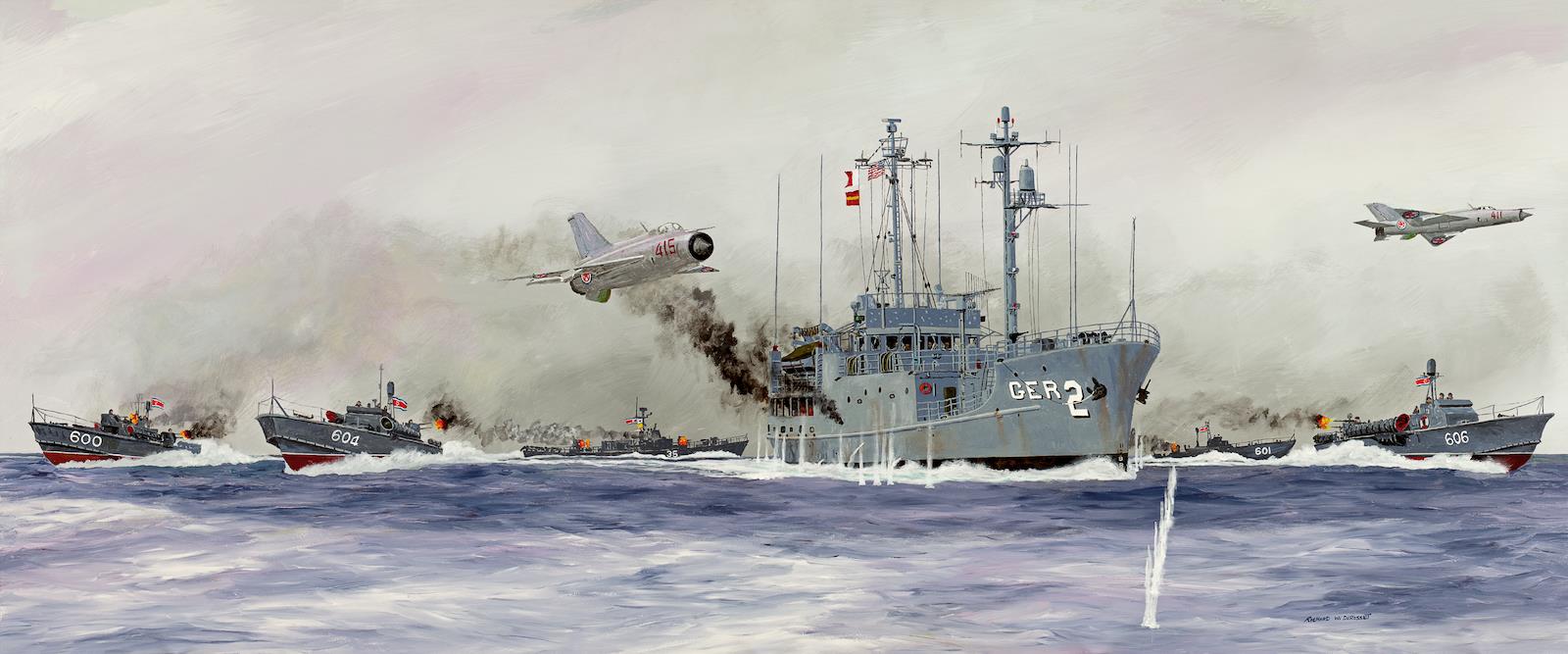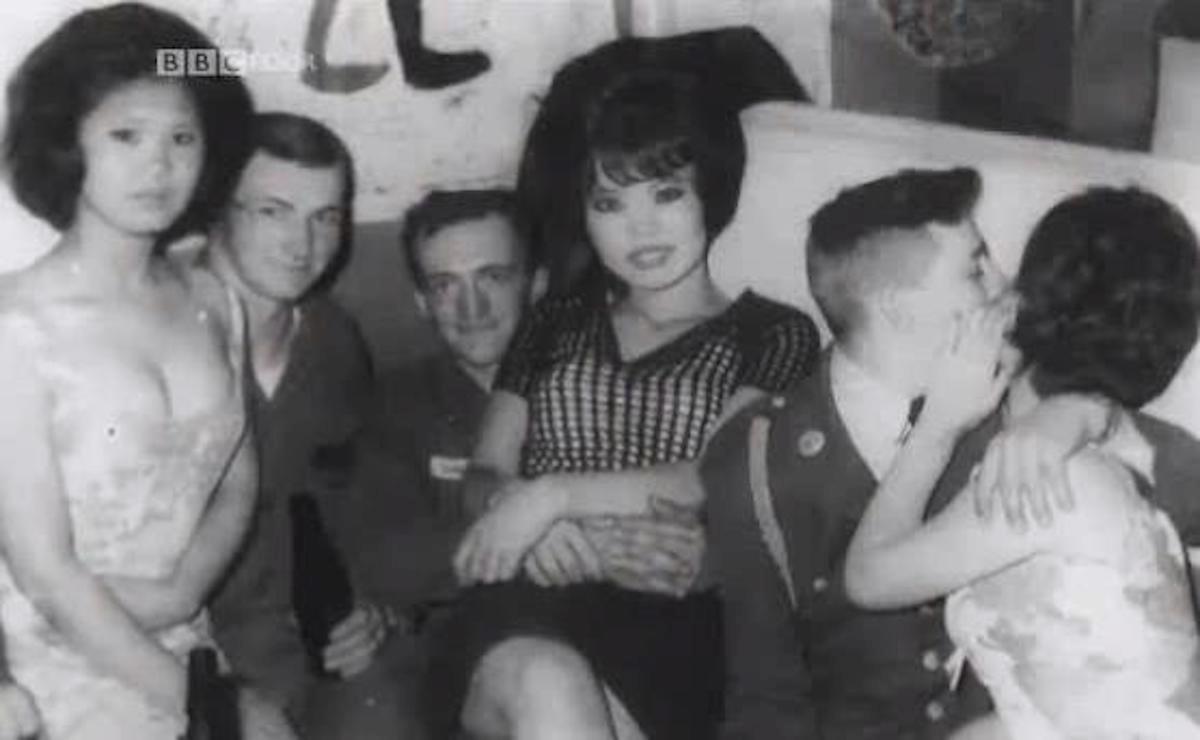(MENAFN- Asia Times)
Acclaimed author Robert Whiting is so tightly plugged into Japan that the first edition of his memoir Tokyo Junkie: 60 Years of Bright Lights and Back Alleys … and Baseball came out in Japanese. Then the editors of the English edition, for whatever reason, decided against including his material on espionage. That decision is our readers' gain. Asia Times earlier published one of those segments and now we're serializing another. Part 1 is here and Part 2 follows:
As a US Air Force enlistee who'd just graduated from the electronic intelligence school at Keesler Air Base in Biloxi, Mississippi, I arrived in Japan in 1962 and reported for work at The PACOM (Pacific Command) Elint Center.
A two-story building near the rear gate of the Fuchu base west of Tokyo, the windowless structure had walls three feet thick. The solid steel front door was manned around the clock by Air Police guards, wearing Smith & Wesson Model 15 six-shot revolvers , who inspected the special IDs that the Elint Center personnel had to show in order to gain entry.
The Elint Center was a tri-service electronic intelligence-gathering-and-analysis unit. The spy operation was under the joint direction of the National Security Agency and the Central Intelligence Agency. Inside were several large computer bays and another solid steel door that could only be opened by punching a secret code (changed weekly) into a panel of buttons. Behind that door was where war plans were made.
You had to have a Top Secret security clearance to get in the building. In my case the FBI had sent agents to Eureka, California, to interview family members, neighbors, friends and high school officials to make sure I was a loyal, red-blooded American without any subversive leanings.
The Elint Center was responsible for two types of intelligence gathering. The first, run by the National Security Agency, a wing of the Department of Defense, sent low-altitude flights along the coasts of China, North Korea and eastern Russia – including Vladivostok, which had a major Soviet naval and air force presence – to gather data, with occasional penetrating probes inland.
The second type of intel gathering, managed by the Central Intelligence Agency, flew high altitude missions deep inside the three countries.
Both high and low sorties came back with reels of photographs and recorded tapes filled with various types of ground radar and telemetric data related to enemy air defenses, for Elint Center analysts to examine. A high priority was placed on getting photographs of known and suspected nuclear weapons facilities.
For the low altitude lights, Fifth Air Force operated a fleet of four-engine propeller craft, P2Vs and C-135s, that flew out of Atsugi Naval Base, 28 miles southwest of Tokyo, as well as from Taipei. When penetrating the Chinese mainland, the planes flew at altitudes as low as 1000 feet or even lower to escape radar detection.
For the high-altitude flights, the Lockheed U-2 aircraft was used. The U-2 planes had been piloted by American civilians and flown out of Atsugi until 1960 when American U-2 pilot Gary Powers went down over Russia and was taken prisoner. After that, all U-2 flights were flown out of Taipei by Republic of China pilots. USAF jet couriers then rushed mission data to the Elint Center for analysis.

U-2. Photo: Warfare History Network
I was an analyst from day one. I sat at a highly sophisticated and extremely expensive console called an SLA Pulse Analyzer, which featured a six-inch oscilloscope with assorted knobs, dials and switches and an array of analytic equipment: quarter-inch tape players for two-track recordings used in low altitude missions and two-inch sixteen-channel players used in U-2 missions; a brush recorder (which produced high-speed images using black ink on white paper); a visicorder (which printed out high-speed images and signals using light emissions); and a continuous loop player – among other tools and instruments I was familiar with from Elint School.
I was given a tape every day when I reported for work and ordered to analyze every sound. I would identify a sound by first determining its pulse repetition frequency on the oscilloscope, then measuring the scan or sweep by timing the intervals between each appearance of the sound. Following that, I would check on a map for the plane's location when the signal was recorded.
The countries under surveillance used three basic types of radar: early warning, height finder and fire control. Early warning was a coastal radar designed to locate incoming enemy aircraft. Height finder determined the altitude of the invading plane.
The third, fire control, which usually operated from farther inland, was characterized by an extremely high-pitched sound, as it honed in on the aircraft identified by the height finder. Once the fire control succeeded in locking in on an aircraft, it could send a surface-to-air missile to knock it out of the sky. The trick for our pilots flying overhead was to make sure that did not happen.
The output from the signal analysis was collated with the data gleaned from photo analysis and combined with other on-the-ground intelligence to produce air intelligence studies. If war broke out, the pilots of our B-52 bombers would have to know how to enter and maneuver through enemy territory without being detected, for long enough to unleash their bombs.
After obtaining knowledge of the enemy radar, we could render it ineffective – for example, by jamming the signal or making the enemy think there were many more planes in the sky than there actually were. These tactics were called electronic countermeasures (ECM).
Although it was sedentary work, it was also exciting in its own way given its importance to the national security of the United States. For a 19-year old redneck from Eureka still suffering from acne, it certainly beat bagging groceries at the 7th & E Supermarket, which had been my previous job.
That we were violating the sovereign air space of other countries and then denying, at the highest levels, that we were doing it was something that nobody I knew lay awake at night worrying about. China, Russia and North Korea were communist nations. And communists were the enemy. Those were the times we lived in. And that was the life we had chosen.
After all, hadn't Soviet Premier Nikita Khrushchev banged his shoe on a podium at the United Nations in a scathing attack on American imperialism and declared to us,“We will bury you”?
Need to know
There were other peripheral operations going on as well. There was something called The Naval Security Group (NSG), which had navy ships patrolling the coast of North Korea and picking up intel on submarines and surface vessels. One of them was the USS Pueblo, which in 1968 would be boarded and captured by North Korean forces.

Original oil painting depicting North Korean attack by artist Richard DeRosset for USS PUEBLO crewmember Tom Massie. North Korean ship and aircraft numbering is exact for the attacking forces. Photo: USSPueblo.org
There was also the Army Security Agency (ASA), which monitored military chatter in Russia.
Both the ASA and NSG had technical representatives at the Elint Center. Access, however, was limited by a“need to know” policy. No one ever knew all of the missions or even the parts that the different sections played in the execution of a given mission and analysis of the results.
The ratio of officers to enlisted at the Elint Center was nearly one to one. The whole was an esoteric mix of soldiers, sailors, airmen and marines – with a liberal sprinkling of civilians – and there was not a lot of lost love in their relations with one another. Pejorative terms like“swabby,”“grunt”“jarhead” and“flyboy” peppered daily conversation.
The schedule called for a 40-hour week, eight to five, Monday to Friday. After working a regular shift I would lift weights at the base gym and take aikido lessons twice a week – those exertions followed by further instruction in the art of drinking at the Airman's Club or off base.
But more often than not, we were called in to work 12-hour shifts on missions that required urgent data analyses. On more than one occasion we would have to hunt down fellow analysts to haul them back to work.

US military men with ladies of the night. Screengrab photo: Cooljapan
That could entail searching the bars on the strip and the back street shakuhachi parlor – the Japanese term for a bamboo flute provided a slang euphemism for fellatio. That establishment offered a nicely appointed waiting room, free drinks, and an ample collection of back issues of Sports Illustrated to pass the time until one's number was called.
For our roundup, we might have to look into another establishment called“Derby” where a hand-painted English sign proclaimed:“Turkish Bath Room: Well Come.” There young ladies would wash a serviceman and massage him and attend to any other needs he might possibly have.
Some analysts – I'm not saying who – were seen reporting to late-night duty call with suds in their ears
Next: The 13 stressful days of the Cuban Missile Crisis
MENAFN27012022000159011032ID1103604049